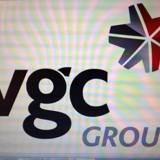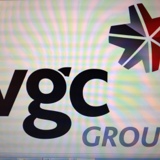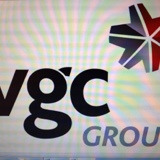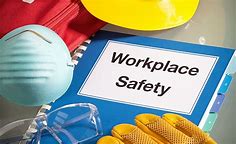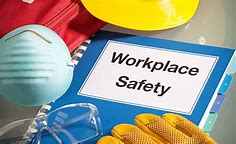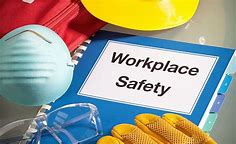Information
-
Audit Title
-
Document No.
-
Client / Site
-
Conducted on
-
Prepared by
-
Location
-
Personnel
PPE
-
Are PPE requirements sufficient?<br> -Should gloves be required?<br> -Should a face shield be required?
-
Is PPE supplied adequate for the task?<br> -Previous injuries when using current PPE? Why?<br> -PPE being replaced excessively? (e.g. Burn holes, soaked with liquid chemicals, etc.)
-
Is PPE being worn properly? <br> -Ear plugs completely inserted into ears<br> -Safety glasses fit properly and pass fit test (gaps no larger than width of finger)<br> -Gloves being worn when handling materials that are sharp, hot, etc.
-
PPE supplies readily available to operators (Interview >= 2 employees.)
Tools/Machinery/Equipment
-
Are all tools in good working condition?<br> -Held together with tape?<br> -Excessive noise/vibration?<br> -Requires excessive manual manipulation?
-
All existing guarding in place?<br> -Guards laying on the floor?<br> -Bolts/Screws missing from fixed guarding?<br> -Guards shifted causing open point of operation?
-
Existing guarding sufficient in preventing access to the point of operation?<br> -Gaps in guarding too large?<br> -Use of chains as barrier guarding?<br> -Interlocked/Presence sensing devices not working properly?<br> -No guard installed where it should exist?
-
Machinery working properly and not causing regular manual manipulation?<br> -Frequent breakdowns causing manual work?<br> -Machinery producing excessive noise/vibration due to disrepair?
-
Machinery design/layout inherently hazardous?<br> -Congestion created in design?<br> -Equipment no longer safest design for the process?<br> -Can a hazardous piece of equipment be eliminated from the process/work area?
Hazard Communication
-
Employees are aware of COSHH assessment and understand the hazards of the chemicals they work with. (Interview >=2 employees)
-
Chemicals are stored in proper containers and labeled properly?<br> -Labels legible and accurately indicates the chemical that is inside the container?
-
Incidental spills cleaned up immediately?<br> -No evidence of spills being left?<br> -Chemicals being tracked on employees' shoes and/or mobile equipment?
-
Chemicals stored properly?<br> -Flammable materials not in use stored in proper cabinet/safety container?<br> -Incompatible materials stored away from each other?
Walking/Working Surfaces and Fall Protection
-
Proper labels in place and legible?<br> -Portable ladders and stairways require labeling indicating weight limits.
-
Floors and work platforms free of excessive debris and clutter?<br> -Excessive oil, trash, manufacturing byproducts, etc. in the work are?<br> -No items stored on stairs?
-
Handrails secure and free of excessive defects?<br> -Heavily damaged handrails that require replacement? Loose? Broken welds? Bent handrails and/or toe boards?<br> -Handrails do not contain excessive oil/grease?
-
Handrails installed where a fall from a height of four feet or greater exists?
-
Fall protection equipment available for working at heights?
Emergency Response/Fire Protection
-
Fire extinguishers inspected and unblocked?
-
Employees aware of emergency procedures and where assembly areas are? (Interview >=2 employees)
-
Eyewash/Safety Shower stations inspected and unblocked?
-
Spill kits are available where needed and are equipped/inspected as required?
-
Sufficient emergency equipment installed in the area?<br> -Fire extinguishers, eyewash, safety shower, spill kits, alarm pull stations, etc.
Mobile Equipment
-
Equipment inspected per inspection frequency requirements?
-
Operators using horns and warning devices where required?
Electrical Hazards
-
High voltage signs in place and visible?
-
Permit in place for isolation.
-
All tools insulated.
-
All equipment pat tested.
-
Staff trained sufficiently.
Hazardous Energy Control (Lockout/Tagout)
-
Employees expected to conduct lockout trained and equipped properly?<br> -Employees understand their role and requirements?<br> -Employees have locks available if needed?
Crane/Hoist Safety
-
Inspections completed as per requirements? 6 month/12 month<br> -Operator inspections completed?
-
Are employees working under suspended loads?
-
Are cranes working within their operating limits?<br> -Capacity not exceeded?<br> -Upper limit switch not used as a stop?
General Safety and Housekeeping
-
equipment not left laying around?
-
Equipment in good condition.
-
Floor surfaces suitable
-
General tripping hazards due to housekeeping, equipment layout, and/or workstation design?
Signature and Finalization
-
I have completed this assessment to the best of my knowledge. This audit is not intended to identify all safety and health hazards, but to identify all visible/known hazards as of the date printed on the completed assessment. assessment.
-
Select date
-
General Comments
